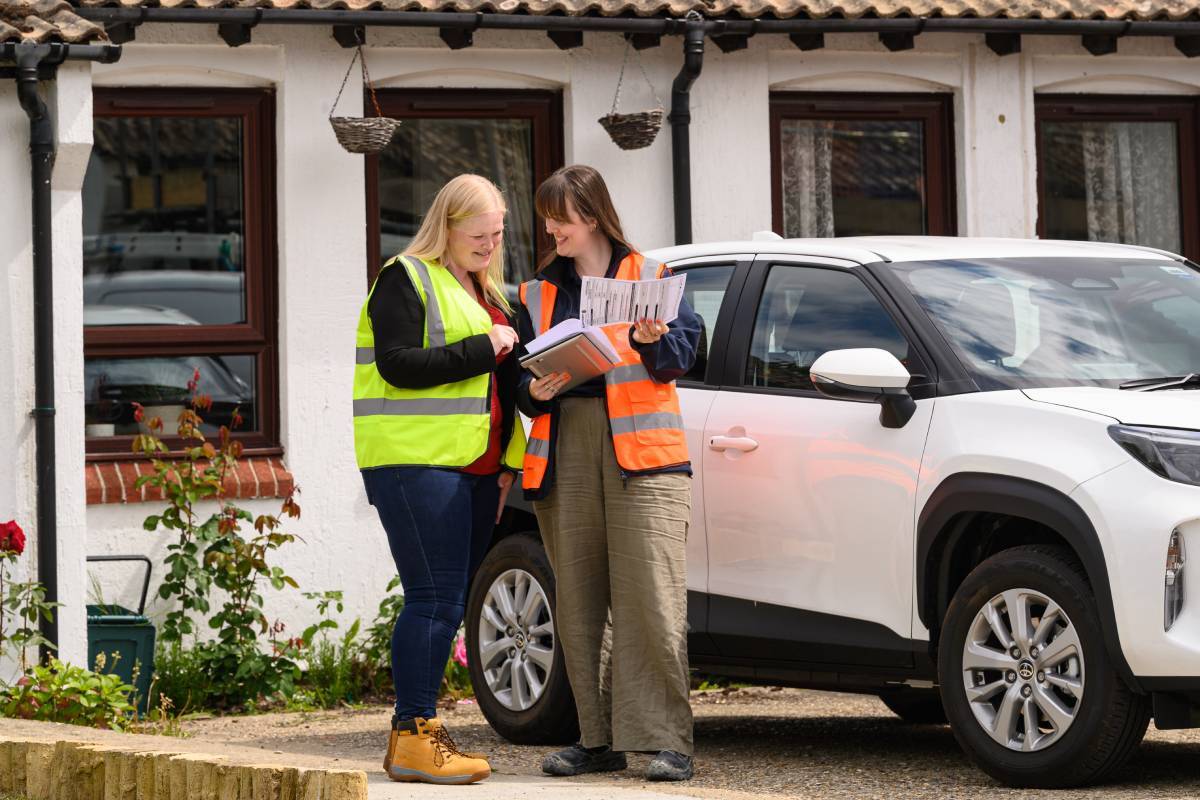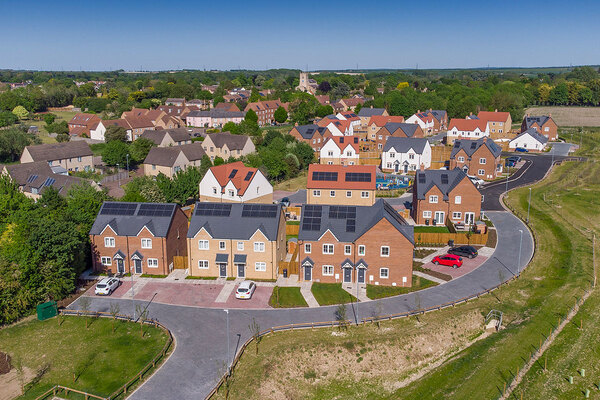Sero retrofit Q&A: What would you do differently?
Kathryn Hulkes, head of retrofit delivery at SNG and Anne-Marie Ratcliffe, key account manager at Sero, share their reflections on improving the retrofit process
Q: What have you learned from the process so far?
Kathryn: Mobilising the supply chain quickly after funding allocation is critical to delivering on time. To make this happen, it’s important to have as much prepared in advance as possible, including contracts, scope of work, routes to market, frameworks, and performance outcomes/KPIs.
Anne-Marie: Additionally, clearly defining performance expectations is key—industry standards are important, but you also need to educate stakeholders both internally and externally throughout the extended delivery team about the higher quality and specific goals that you’re aiming for.
Q: In hindsight, were you properly prepared for both the bidding and delivery aspects?
Kathryn & Anne-Marie: Having SNG’s Homes and Place Standard gave us a solid starting point for building the bid. The collaboration between Sero and SNG worked well, and Wave 3 has been even smoother. However, our bid was ambitious and delivering it within the expected timelines turned out to be a learning curve and in hindsight we weren’t as prepared as would like to have been. Mobilising the supply chain took longer than anticipated, which meant some customers had a big gap between when they had their assessments and when work started. Additionally, balancing homes across a wide geography was challenging. A key lesson learned is to better cluster homes to improve efficiency.
Q: What if anything changed between the bid and implementation, and how did you adapt?
Kathryn & Anne-Marie: We initially planned for cyclical delivery, but delays in procurement and contracts meant we had to adjust to a more batched approach. Engagement with customers evolved, as we realised we needed more touchpoints, and we couldn’t use the same approach as with planned maintenance. We also had good consideration and intelligence in the bid team, but lacked a dedicated delivery team, which impacted the flow during implementation.
Q: If you had a blank piece of paper to do the project again, what would you do differently?
Kathryn: We’ve learned a lot about Resident Engagement. The customer experience for retrofitting is very different from planned works. Customers need to fully understand the benefits of improvements, not just when and how work will be done. Consideration also needs to be given to how you explain technical aspects, such as Air tests and why we need to involve organisations such as the DNO, and who they are. It really needs to be done in simple, collaborative terms to prevent confusion. We’re lucky we’ve now developed a ’look and feel’ for our communications and some good customer materials and visuals we can build on.
Q: What surprised you most (both good and bad) about the process?
Kathryn: The small details, like the unexpected consequences of replacing storage heaters with radiators, had a surprisingly big impact, such as creating holes in carpets. On a positive note, the immediate benefits seen by customers from heat pump installations, including improved health and reduced bills, were more tangible and rewarding than expected.
Anne-Marie: The differing interpretations of standards and quality across the supply chain was an unexpected challenge. However, when we worked with contractors and ran training sessions, the quality dramatically improved, and so did our relationships.
Q: What was the biggest obstacle to overcome?
Kathryn: The biggest challenge was winning over customers and helping them understand why the work was necessary, especially in overcoming their fears of disruption and unfamiliar technology. We’ve recently created some short videos with other customers explaining what difference retrofit works have made to them and that will really help.
Anne Marie: Working collaboratively with contractors to ensure a quality delivery and everyone learning from mistakes along the way was essential.
Q: How will you implement your learnings moving forward?
Kathryn & Anne-Marie: We’ve conducted workshops with teams across delivery, procurement, and strategy to discuss areas for improvement. Each lesson learned is being assigned to a responsible person to ensure we integrate these insights into Wave 3. This includes improving our customer strategy, creating clearer design checklists for tenders, starting procurement earlier, and acknowledging the time required for various tasks in our planning.
Q: If you were to design the program from scratch, what would you change and why?
Kathryn & Anne-Marie: The deadline to spend funding within a specific timescale forced us into a delivery program that didn’t align with our ideal approach. That coupled with the importance of everyone being in contract and starting the delivery programme at the same time. It’s important to ensure workstreams flow from one to another, to avoid bottlenecks and prolonged journeys for customers.
When selecting your supply chain, particularly the PAS 2035 roles, giving focus to both the qualifications and experience each role needs is important. PAS 2035 is still to an extent open to interpretation and this can often lead to difficulties in getting resolutions and causing delays.
Q: What was the biggest learning about the importance of team collaboration?
Kathryn & Anne-Marie: Having the right people on your bid team, including those from strategy, delivery, customer, procurement, finance, and maintenance, is essential for making informed decisions. We learned that involving maintenance in the early stages is key. Getting their views on which heat pumps to use for example can avoid maintenance challenges and higher costs later on. Lastly, ensuring that everyone is on the same page from the beginning—particularly with contractors—is key to avoiding bottlenecks and delays.
Q: What advice do you have for future projects?
Kathryn: When choosing your supply chain partners, it’s essential to find those who genuinely want to collaborate and meet your quality standards, not just tick boxes. This ensures issues are resolved quickly and that there’s a shared commitment to success.
Anne-Marie: SNG’s long-term commitment to net-zero goals and delivering quality is inspiring. It’s this attitude that helps us overcome challenges—when things get tough, we look for solutions instead of seeing obstacles as showstoppers.



